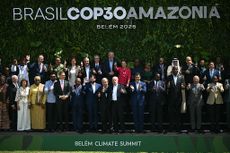Global Economy
The latest news, updates and opinions on Global Economy from the expert team here at MoneyWeek
-

Did COP30 achieve anything to tackle climate change?
The COP30 summit was a failure. But the world is going green regardless, says Simon Wilson
By Simon Wilson Published
-

How to profit from defence stocks beyond Europe
Opinion Tom Bailey, head of research for the Future of Defence Indo-Pac ex-China UCITS ETF, picks three defence stocks where he'd put his money
By Tom Bailey Published
Opinion -

Will the internet break – and can we protect it?
The internet is a delicate global physical and digital network that can easily be paralysed. Why is that, and what can be done to bolster its defences?
By Simon Wilson Published
-

Canadian stocks for a new era of deglobalisation
Greg Eckel, portfolio manager at Canadian General Investments, selects three Canadian stocks
By Greg Eckel Published
-

Jim O’Neill on nearly 25 years of the BRICS
Jim O’Neill, who coined the acronym BRICS in 2001, tells MoneyWeek how the group is progressing
By Dr Matthew Partridge Published
-

'My predictions for the next 25 years'
Opinion What will the world look like when MoneyWeek celebrates its 50th birthday? Matthew Lynn shares his predictions
By Matthew Lynn Published
Opinion -

Central banks have evolved. Are they still fit for purpose?
The rise to power and dominance of the central banks has been a key theme in MoneyWeek in its 25 years. Has their rule been benign?
By Simon Wilson Published
-

LVMH is set to prosper as the wealthy start shopping again
After two years of uncertainty, the outlook for LVMH is starting to improve. Is now a good time to add the luxury-goods purveyor to your portfolio?
By Rupert Hargreaves Published
-

US-China trade talks: “amazing” meeting yields tariff truce
Trump hailed a “12/10” meeting with China’s Xi Jinping on Thursday. But despite progress on rare earths and tariffs, details about TikTok’s ownership are still unclear.
By Dan McEvoy Last updated
